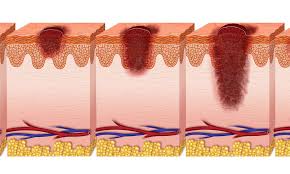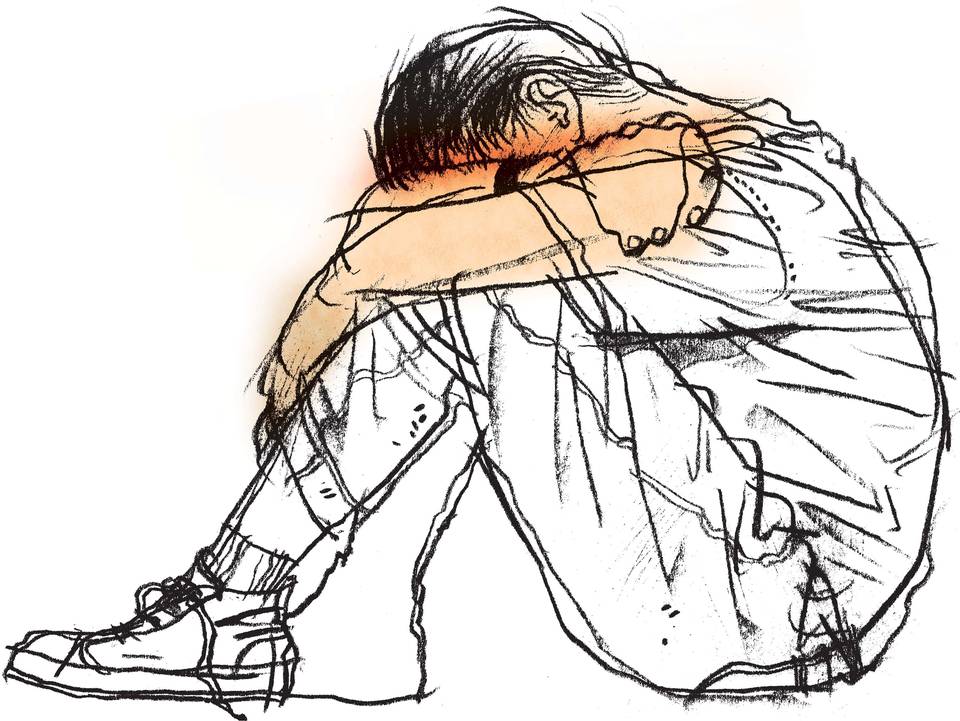JUNE 2018: Melanoma Prevention
 Melanoma: Prevention and Detection Can Be Lifesavers
Melanoma: Prevention and Detection Can Be Lifesavers
Because it can spread quickly, melanoma is the most serious type of skin cancer. It can be deadly, but it doesn’t have to be. You can take steps to protect yourself and detect this skin cancer before it makes its move
Protect your skin. Sunscreen is an equal-opportunity provider. It doesn’t matter the color of your skin, it doesn’t matter how easily you tan. You still need it to protect yourself. In our pharmacies, you can find a wide array of sunscreens. Each carries a sun protection factor (SPF). The higher the SPF, the more you are protected from skin damage and skin cancer. Also look for a broad-spectrum sunscreen. That’s one that protects against both ultraviolet A and ultraviolet B—rays that can increase your chances of skin cancer. If you have questions about any of this, be sure to check in with our pharmacist
Know the signs. Here’s an easy way to remember what to look for—the ABCDEs of melanoma:
• Asymmetry. One-half the mole is different from the other half.
• Border. The edges are poorly defined, irregular, or scalloped.
• Color. The color varies from one area to another. It might be white, red, or blue. Or it might have shades of tan, brown, or black.
• Diameter. When first diagnosed, melanoma is often larger than the size of a pencil eraser.
• Evolving. Moles or skin lesions often look different from other moles. Or they may be changing in size, shape, or color.
Skin cancer may show up in other ways too: You might have a slowly growing thick patch of skin that looks like a scar. You might have spots that are bleeding, painful, or itchy. Or you might have a band of dark skin around a toenail or fingernail or a dark streak under a nail.
Do you find it hard to keep track of skin changes like these? Try using the Body Mole Map available at the website of the American Academy of Dermatology.
Examine your skin. Look for warning signs of melanoma. The point is to check all areas of your body. So you don’t miss any areas, try to check in the same order each time. Look in a mirror and check your front, back, and sides. Check forearms, underarms, palms, legs, and feet. Don’t miss the soles and spaces between your toes. Use a hand mirror to check areas you can’t otherwise see, like your scalp, the back of your neck, and your buttocks.
Better yet? Have your spouse or partner get trained in spotting skin cancer. A recent study showed how effective this can be. This approach could be even more important for those at highest risk. That includes people with many moles or a previous history or family history of melanoma.
See your doctor. If you have any of signs of melanoma or other skin cancer, do not wait. See a dermatologist right away. This special skin doctor is best trained in diagnosing skin cancer. Remember: At some point in their lives, one in five Americans will develop skin cancer. Seem like the odds are stacked against you? Not necessarily. If you catch it early, skin cancer—even melanoma—is very treatable.
MAY 2018: Mental Health; Coping with a Chronic Condition

Lasting three months or longer, a chronic condition affects half of all adults in the U.S. By 2020, about 157 million Americans will have a chronic condition. Half will grapple with more than one.
Pain, fatigue, and a wide array of other symptoms…. medication management…. multiple doctor appointments…. uncertainty about the future…. A chronic condition can really take a toll, and even change how you see yourself. If you have a chronic condition, learn what you can do to regain a sense of control over your life, so you can live it to the fullest.
Experiment with stress busters. Find ways to decrease your stress levels:
- Listen to relaxing music.
- Take a walk in nature.
- Call a friend.
- Sign up for an art class.
- Try meditation or qigong.
- Sit quietly in a garden. Take in the beauty of the flowers, birds, and bees.
Go easy on yourself. Are you feeling overwhelmed? Do you find yourself more sad, angry, or fearful than in the past? Feelings like these are common with a chronic illness. Managing a chronic illness may take a lot of energy, focus, and time. And you may face new limits on what you can do or be really worried about your future or that of your family.
Give yourself time to adjust to a new diagnosis and lifestyle. Set realistic goals and let go of activities you don’t need to do. At the same time, know that facing your diagnosis head on is better than pretending it never happened.
Watch for signs of depression. Temporary sadness is expected. But if symptoms like these last more than a couple of weeks, you may have depression and need professional help:
- Feeling worthless, hopeless, guilty, or empty
- Not enjoying activities you did in the past
- Having trouble focusing, remembering details, or making decisions
- Trouble sleeping or sleeping more than usual
- Thoughts of death or suicide
Seek support. You don’t have to do this alone. Even if it’s hard for you to get out and about, there are still resources you can take advantage of.
- Find health care providers who are knowledgeable about your condition and also empathetic!
- See a therapist, especially if you may be depressed. Research suggests that depression combined with a chronic illness can magnify the symptoms of both illnesses. So treatment is more important than ever.
- Find support and information online or in your community. Places to start are the library, social networks, national organizations, and local hospitals. You may be able to connect with others online who have the same condition as you. This may be especially helpful when you feel too ill to go out.
Know that you can also come to any of our pharmacists for support. Of course, we can advise you best about your medications. But we may also be able to point you to other resources. Just remember: We’re here with you for the long haul.
- « Previous Page
- 1
- …
- 50
- 51
- 52
- 53
- 54
- …
- 62
- Next Page »
